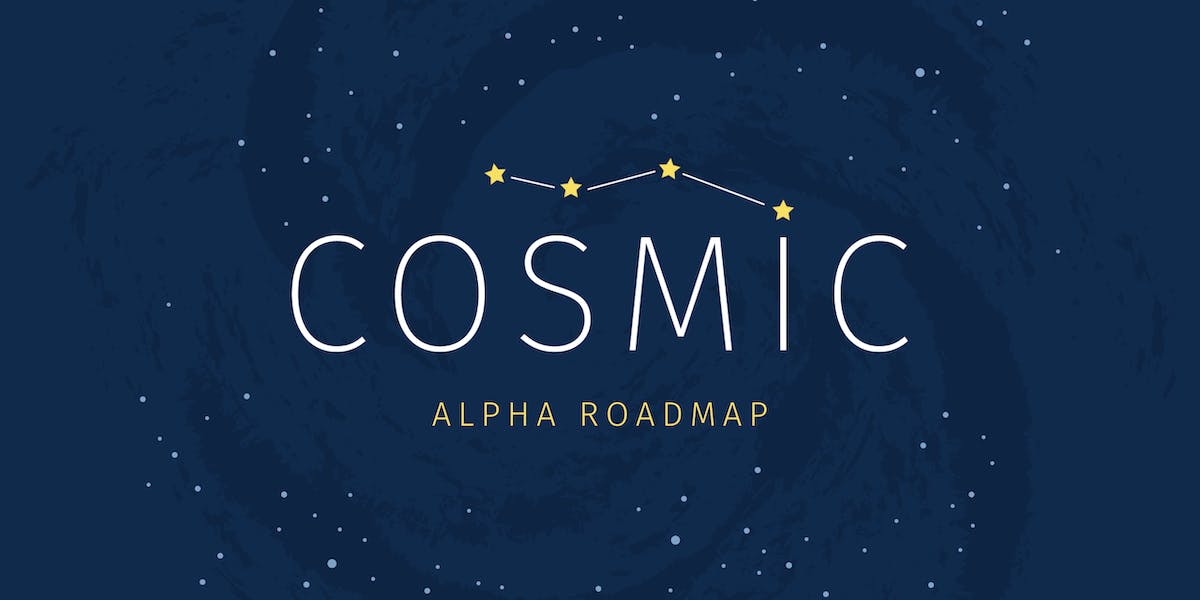I’ve been following the work on COSMIC (though not super actively) and I keep on saying that I like what I’m seeing because, well, I do! The idea of a tiling DE is a very exciting one and COSMIC really has the potential to become a Major Linux DE.
I particularly like that, just like their current Gnome extension, it supports both tiling and floating, with a quick toggle between them.
This’ll be a pretty interesting year for people interested in DEs.
As a regular i3 user, I was very satisfied on how tiling was implemented into the Pop shell of Gnome. After a few keybind change here and there it almost felt like home maneuvering the windows and workspaces. One minor complain is glitches happen when external monitor is connected/disconnected on the fly (laptop usecase), in which case windows are disoriented and thrown around at random unexpected places instead of staying at where they were. I’m blaming Gnome on that one however, since I’m assuming it is related on how Gnome handle multiple screens and Pop shell act on top of it, so I’m expecting it to be fixed in Cosmic DE
I’m just happy there’s a rust DE being written in slint. KDE is nice and all, but it’s all C++. No way am I touching that trainwreck of a language again.
COSMIC is being written in libcosmic, which is based on iced.
I’m confused. Slint says it’s working with System76?
A great start to the week - @pop_os_official will collaborate with us to offer Slint as an alternative toolkit for application development on Cosmic Desktop.
#rustlang
The keyword is
alternative. All first party applications are written natively with our libcosmic toolkit, which is based on iced-rs. We are using a fork of iced though because we needed to implement a custom runtime with the sctk (smithay client toolkit) for COSMIC applet development, but our desktop applications will use the original winit runtime.
Yeah, I’m a Pop user and like what they do with Gnome now. I can’t wait to see what it’s like when the desktop isn’t limited by the Gnome extension system.
I’ve been following Cosmic and really looking forward to it. I love the idea of a Gnome-like desktop without Gnome-like design decisions.
Incredibly excited to try it. I love the early support for Nix, I plan to run it as soon as a NixOS module becomes available!
Huge props to the design team here, the aesthetic looks amazing on all of the apps I’ve tried. They all feel consistent and look great.
Tldr: New desktop environment designed for PopOS (but usable elsewhere)
I’m really excited to test the Alpha, it’s looking really good so far!
I recognize this is an odd comment to make, but I’m glad to see this screenshot tool supports capturing a window in Wayland. My next question is, can the screenshot tool be invoked from the command-line or via a script?
deleted by creator
I’m not sure why you think this is unique to COSMIC or elementary OS. Do you not realize that this is true of all operating systems? Look at Steam, Spotify, Discord, Zoom, and Slack for starters.
deleted by creator
None of what you stated makes sense. Most people are not using exclusively GNOME applications on GNOME, or exclusively KDE applications on KDE. Like with elementary OS, most people are running applications like Steam, Spotify, Discord, Zoom, Slack, etc. Plenty of people are using Qt and KDE applications on GNOME, or GTK and GNOME applications on KDE. You think no one uses Krita or Scribus on GNOME, or GIMP on KDE?
Thanks to Flatpak, you might even be running elementary applications on your system. Even Windows back in the late 90s and 2000s was full of desktop applications with custom proprietary interfaces. Nowadays everything’s becoming a web view bundled with a Chromium runtime, and you’re more worried about a COSMIC app ecosystem having a different UI from GTK?
COSMIC is a good thing because it’s a standardized and open source cross-platform native desktop toolkit. People can create themes for it, and those themes can be bundled alongside GTK and Qt/KDE themes. Due to the nature of how Rust libraries are developed and linked, COSMIC applications are mostly statically-linked, which even makes it trivial to put them on a USB drive and bring them to any PC.
deleted by creator
That’s already not possible on GNOME because some GNOME applications hardcode their theme, others use libadwaita, some use GTK4 without libadwaita, some use GTK3, and there may still be a GTK2 app lingering around here and there in the repos (ie: GIMP).
Few people are going to care that there’s a GTK application installed on their COSMIC desktop. COSMIC will automatically generate GTK3/4 themes to match the system theme. We may even automatically generate a libadwaita theme, so it will look “same enough”.
deleted by creator
Why do we invent new DEs instead of making proper settings app in already existing ones?
Because that’s not how software development works, and that’s not how you make progress in the field. In order for our technical vision to be integrated with an existing desktop, such as GNOME, it would have required that they give us the reigns to their project to delete their entire codebase and rebuild it into exactly what you see today in COSMIC.
As in life, sometimes you’ve got to demolish, pave, and build better foundations. There’s a lot of cool technologies available to build a truly next-generation desktop experience in, but you’re not going to get it through rigid bureaucracy and old tools. With COSMIC, we’ve got freedom to make decisions and build something truly unique, and we’re using our talent to show you what we can do.
deleted by creator
If you will create “next gen” desktop, you will just solve some problems of already existing ones and create your own. Maturity of software is far more important, than uniqueness. GNOME didn’t evolve into its current state for no reason.
Translation: no one should ever attempt to innovate on the Linux desktop. GNOME is the epitome of software development and everyone else should quietly give up. If GNOME can’t fix an issue, no one can. Only GNOME has the god-given right to make decisions on how desktops are developed for Linux. There can only be one party. The One Desktop principle. Contribute to your party leader, or else…
Sometimes it’s easier to start over than unbreak an existing project. Gnome is old and big so it’s harder to change. So starting over where you don’t have to keep existing features or care about existing users is way easier than fixing gnome and rewriting it in rust. Plus system 76 can. There’s no single party that can stop them from making a desktop
We do what we must because we can.
FOSS software development is very much like evolution. Many projects are born but only the best thrive. It is a wasteful system because resources are spread over similar projects, but it creates very good software.
Not really. Best Foss projects do not always thrive. Git wasn’t really better than mercurial. But it had happened to be published earlier, so it got wider adoption.
It doesn’t have to be the best, it just has to be better than the current standard. Git was better than CVS and SVN, so it won.
Welcome to FOSS lol
Because some developers act on their own consciousness and don’t have a slavemaster corporate manager telling them what they need to do or not do.
When one doesn’t like any of the available choices yet a new one is born. Can you measure how many v.terminals we have, or how many window managers on X11?
Fortunately such “new choices” get abandoned very quickly. Making new solution instead of improving existing ones is counterproductive. Unless there is a large legacy codebase. Smart people have invented Unix principles to avoid that.











